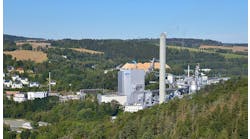The hurricanes that strike North and Central America each year are rightly known as one of the most powerful natural forces on Earth.
However, there are a few unassuming, but stalwart forces that may be even stronger. Chief among these is the unparalleled teamwork and devotion demonstrated by the engineers, technicians, operators and managers at ExxonMobil's multi-unit chemical facility in Beaumont, Texas, as they worked to repair and rebuild from the devastation of Hurricane Ike's almost direct hit at 12 midnight on Sept. 12, 2008.
In his keynote address to the Invensys North America Client Conference this week, Ken Anderson, ExxonMobil process control manager, described his colleagues' amazingly fast, well-defined and efficient preparations for and recovery from the third-most-destructive storm ever to hit the United States.
Anderson recalled that Ike was listed as a Category 2 storm, but its sustained 110-mph winds were just short of Category 3, and its storm surge coming off the Gulf of Mexico was in the Category 4 range. "Hurricane Ike's 17-foot storm surge when it slammed directly into Galveston Island was still a 12-foot surge when it reached the Beaumont facility 35 miles inland," said Anderson. "It was the first time I heard the National Weather Service tell people to escape a storm or face certain death." In total, Ike killed 195 people, including 112 in the United States. Thirty-four victims remain missing to this day.
The "dirty side" of the hurricane choked, halted and reversed the flow of the river bordering Beaumont's 1960s-vintage chemical units, and the 12-foot surge flooded them under 6 feet to 10 feet of saltwater for three or four days, destroying or damaging much of their infrastructure. These units normally manufacture olefins, aromatics, paraxylene and specialty synthetics and catalysts. The site is the only one that makes some crucial components for Mobil 1 motor oil.
Even after the plant was pumped and dried out, the news was hardly better. The facility's parking lots were buried in a deep layer of sea sand and shells, and its buildings, vehicles and banks of computers, screens, cabinets and other equipment were already corroding after being immersed in the saltwater. "For example, the specialty chemical unit's Foxboro, Triconex and PLC-based control system was a total loss," says Anderson.
Fortunately, if anything can be considered good fortune in such a situation, the response of ExxonMobil's staff and its many partners was unprecedented, according to Anderson. "After the storm, we had several weeks and months of sunny weather, and this was key to getting the recovery done in record time," says Anderson. "Starting the recovery was difficult. There was no power in the plant or city. There was no telephone service and only unreliable cell phone service. Also, the hotels, motels and restaurants were damaged or not open. And many of Beaumont's staff were dealing with similar damage and disaster recovery in their own homes after working 14-16 hours per day on the plant's recovery. Many homes were flooded or had missing roofs. There were a lot of damaged autos."
ExxonMobil assembled a 35-person recovery team by Sept. 17 and began working on about ten buildings. Their DCS and PLC cabinets were demolished, remediation and reconstruction projects were started, marshalling cabinets were replaced and a large amount of cable was stripped and reused. Staffed by ExxonMobil employees from many far-flung locations, the team split into two parts, one to secure supplies and resources, and the other to pump out the plant. Other focus areas included control system recovery (CSR), power distribution, analyzers, mechanical execution and loop checking.
After the CSR team was assembled, Anderson says the group developed a CSR guiding principles document to help get all the team leaders and members on the same page. "This became a key reference document that helped us develop an execution strategy and schedule, which identified critical path work, and then established an action plan for each building," he explains. The old Foxboro DCS employed a UNIX-based system, and it was replaced by a Microsoft Windows system.
"Invensys also helped us overcome many challenges during the recovery. Their tools worked well, and this spared us a lot of anxiety," says Anderson. After demolishing the old specialty chemicals control room, ExxonMobil built a temporary control room in a trailer and installed a new Foxboro DCS, Triconex devices, Allen-Bradley PLCs and other equipment.
"The key to our recovery's success was establishing a clear chain of command and having clear criteria for decision-making," adds Anderson. "We had unambiguous roles and responsibilities for creating the CSR team, and established it as the single point of contact with other recovery efforts. We also had inter-team loops with everyone's contact information and did a lot of file sharing with flash drives. And, we specified boundaries for CSR's work and asked each proposal that came in if it met the minimum requirement of being crucial for restoring production. If it didn't, it would have to wait.
"We then identified a true schedule of critical activities and were able to cut our estimated six-to-nine month recovery down to about eight weeks," Anderson says. "It also was vital to have direct contact with our vendor factories and leadership, and Invensys' president for North America, Steve Blair, came out and visited with his team. He showed that Invensys really had our back and demonstrated a sincere commitment to working with us on our recovery.
"As a result, within in one month and one day of the flood, on Oct. 14, we were able to send the first successful DCS reading through the temporary specialty chemicals control room. That really helped morale in the plant. By Dec. 7 we were able to produce our first on-spec product thanks to our ExxonMobil recovery efforts and the help we got from Invensys too."




